A Saucy Tale
Every town has its own aroma, a fragrance that stays with you, a little olfactory thread which links you, time, and place. The orange blossom of Cordoba, the jasmine of Carthage, the mix of cleaning fluids, sugar, stale alcohol and despair of Bourbon Street in the morning.
Mostly, the signature scent exists only in one small corner of the town. Never before have I encountered one in which every street and alley is filled with the same aroma.
It was only when I entered my hotel room that I realised that even this, air conditioned place, has the same smell as the air outside. It was all-pervasive, rising from the gigantic, red-draped jars in each shop along the narrow main road.
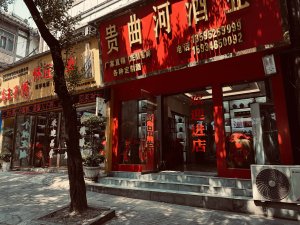
It was there, hanging above the river. It was, I checked, somehow even coming from the ice cream I’d got at reception.
I knew my destination was Moutai Town, what I never expected was that Moutai Town smelled of… Moutai. An aroma that was hard to pin down: heavy, sauce like, fungal, cheesy, fermentative, floral, decayed, sour yet sweet.
A confession before we go any further. I’ve long had a problem with baijiu, of which Moutai is one type. The joltingly intense pungency is alien to me. The endless rounds of toasts in tiny glasses at dinners – and resultant hangovers – might also have something to do with it.
Why then go straight to the heart of the beast? It’s like someone who professes to hate Scotch making a beeline for Islay but, as haiku master Bashō wrote, ‘to know the pine, go to the pine.’
It clearly wasn’t baijiu’s fault, but mine. As a self-confessed booze geek why have I dismissed what is the world’s biggest selling spirit category?
So, with a weekend free after World Class in Shanghai, the invitation to head to Moutai Town and then Chengdu (of which more soon) made sense.
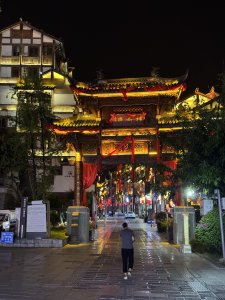
Alcohol is central to the growth of Chinese civilisation. Yellow wine (similar to sherry, but made from millet,) was drunk by poets to aid their creativity, while tea was taken to give focus. Uppers and downers. It’s not new. They would sit together under a full moon, passing the cup around, reciting verses.
It’s possibly that distillation started in China (though I still have a hunch that it came to China from India along with Buddhism). There’s references to what could be stills from the 2nd century BCE Song dynasty – or even earlier.
What we do know is that by the 14th century what we know as baijiu [bai 白, transparent; jiu 酒, alcoholic drink) was being made across China. If wine was for the upper classes and intelligentsia, baijiu was the people’s drink.
By the 19th century, Moutai was one of innumerable centres. The town in the north west of Guizhou sits on a loop of the Chishui River and was a significant port, importing salt from Sichuan and exporting drink. It was a favourite in the imperial court and by the Qing dynasty production was booming. Although it declined in the late 19th century, it regained its status thanks to the town’s role in the Chinese Civil War of the 1930s.
In 1935, Mao Zedong’s Red Army crossed the river four times to escape being encircled by the Kuomintang forces, a decisive moment in the campaign. It’s said that when wounded Red Army soldiers arrived in Moutai Town their wounds were sterilised with the town’s baijiu. With the victory of the communists in 1949, Moutai became the official drink of the state.
In 1951, the government merged three privately-owned distilleries, and created the state-owned Moutai Winery. Since then, ¥10billion ha been invested in distillery. On June 29, 2019, it was officially renamed Kweichow Moutai, recognisable by its white ceramic bottle and red cap.
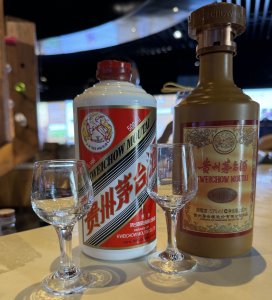
The investigations start after dinner in the store attached to the restaurant. Three glasses drawn by ladle from massive ceramic jars – starting with a five year old, then 10 and 30. ‘Moutai is sauce-flavoured’ is the only guidance. No kidding – those fruits, the pungent esters, a hint of cheese? but also as we move up in age, greater length and complexity. It’s beginning to work on me.
The day after, we go to the museum (the distillery isn’t open to the public) to try and unravel exactly how ’sauce flavour’ is made.
GEEK ALERT
‘Sauce-flavour’ is one of 12 recognised styles of baijiu and is the product of locally grown sorghum, the town’s microclimate and the microflora which exists within it, and the water from the river – the terroir if you like. Then there’s the way in which it is made, a craft refined over centuries.
It starts with daqu (‘Big Qu’) – the starter, the equivalent of the koji used in sake and shochu, used in China to make yellow wine, soy sauce, and rice vinegar. Each town, each distillery making any of the 12 styles will have its own mix of organisms in its qu and therefore different precursors of flavour.
In Moutai Town, the annual production cycle starts on May 5 (Dragon Boat Festival) with the making of daqu. Bricks, made from ground wheat and water, are placed in 3 x 3 piles each separated by a layer of rice straw which helps to lock in moisture as well as contributing its own micro-organisms.
The bricks are left for a minimum of 40 days with the temperature reaching a maximum of 67˚C. Wild yeasts, aspergillus (which helps generate alcohol and esters), mychorrizhia and bacillus start to emerge.
After this, the daqu is is stored for a further six months. Large producers will take some daqu from one batch to inoculate the next to aid consistency.
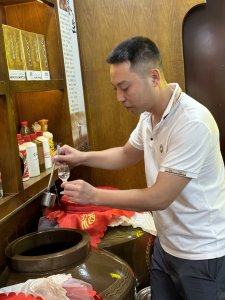
Where baijiu differs from the majority of other spirits is its use of ‘solid-state’ fermentation in which saccharification (the conversion of starches to sugars) and fermentation (creating alcohol, acids, and esters) taking place simultaneously.
Starting on Sep 9th, the sorghum is washed and steamed to start gelatinising. After cooling, crumbled up daqu is sprinkled on top, along with some water.
The mixture is then stacked and left to rest for up to four days. This not only starts saccharification, and creates acids, but also generates nine other yeast types.
The piles are then put into stone pits with more daqu, covered, and the process continues, again at a high temperature (40˚C). Over time, these pits develop their own communities of microflora which also add to the complex chemical interactions.
Each pit is re-stimulated eight times in the season. After the first month, fresh daqu is added along with more sorghum to add starch and protein. In subsequent months, only daqu is added, boosting the sauce-like flavours. The high temperatures are key in this, helping to generate bacteria. Each pit will also have a different flavour as the length of the ferment increases.
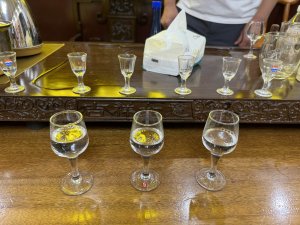
I figured that, after this, distillation would be straightforward. After all, fermentation is all about flavour generation – that’s where the secret sauce lies. How wrong I was.
The fermented grains are placed in the body of the still (the same vessel used for steaming), the lid and neck placed on top and steam distillation begins. The spirit is then cut into heads, hearts, and tails. Then it gets mind-twistingly complicated.
In a year, nine batches of sorghum will be processed. Of these, only seven are used to make the final spirit, with the first two acting as a sort of sourdough starter.
The distillate from the first batch is added to the steamer for the second batch. Its distillate is added to the stack of steamed grains for the third batch. Some distillate from subsequent batches will also find it way into the stacks. Then, to extract more alcohol, fresh grains are added to the later pits and the process is repeated.
Different cut points are also employed. While the heads are discarded, deeper cuts into the tail help generate richer (saucier) characters. Each batch and character within each batch is kept separate. The feints are recirculated into the stacks. I’m sure there’s more craziness at work.
The high strength alcohol (hitting 70%abv) obtained from a single pass in a small still also seems surprising, but as the alcohol vapours rise so some condenses on the grains, are redistilled, and rise again. The bed of grains therefore acts like multiple fractionating plates.

By law, the spirit is aged in ceramic jars allowing slow oxidation and mellowing, with each batch and variant being kept separate. After a year it assessed, and blended and aged for a further two years. A third, large batch, blending then takes place with a further six months or so of marrying. Legally, Moutai must be a minimum of four years old. Some blends will the be kept for longer as blending components.
Got all of that? It wasn’t just the alcohol that was getting into my brain. The volumes, the temperatures, the mystery of daqu and the pits, the additions, re-fermentation and redistillations were baffling.
One thing was clear though and it was a repeat of the lesson I’d learned when trying to get my head around mezcal and clairin. Don’t try and find the answer from production data, just ask the distiller the question – what flavour do you want?
Get into their world and work out from there. Sauce-flavour baijiu isn’t weird or faulty – it is what is desired. This is quality.
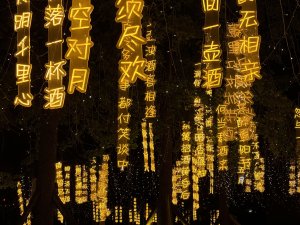
I’m still not sure I’ve fully grasped its intricacies, but rather than politely declining a glass of Moutai or wondering where the nearest pot plant was, I now want to learn more. I’ll reach for that bottle on occasion because it’s fascinating.
That night we wander through the town again. An old man chants sutras by the side of he river, The main square by the river is filled with music from multiple Chinese line dancing groups. Neon poems hang from trees, red stars dangle from the famed bridge. The air is scented with sauce.